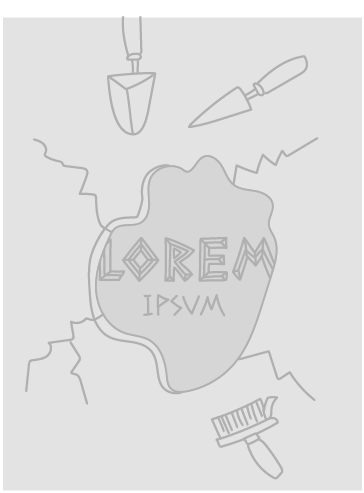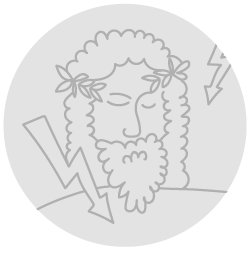Title of the work
Country of the First Edition
Country/countries of popularity
Original Language
First Edition Date
First Edition Details
Bob Blaisdell, Favorite Greek Myths: In Easy-to-Read Type. Mineola: Dover Children’s Thrift Classics, 1995, 96 pp.
ISBN
Genre
Fiction
Illustrated works
Myths
Target Audience
Children (8–11 years)
Cover

We are still trying to obtain permission for posting the original cover.
Author of the Entry:
Robin Diver, University of Birmingham, robin.diver@hotmail.com
Peer-reviewer of the Entry:
Susan Deacy, University of Roehampton s.deacy@roehampton.ac.uk
Elizabeth Hale, University of New England, ehale@une.edu.au

Robert (Bob) Blaisdell
, b. 1959
(Author)
Bob Blaisdell (b. 1959) is an American freelance author, illustrator and editor. He obtained his B.A., M.A. and PhD from the University of California. He teaches English at Kingsborough Community College (City University, New York). He also works as a reviewer for the San Francisco Chronicle and Christian Science Monitor. He is a frequent contributor to Dover Publications; his other works with them include The Story of Hercules (1997), Robin Hood (1993) and Essays on Civil Disobedience (2016). He also wrote the accompanying text to Dover’s Adventures of Hercules Coloring Book, with the illustrations again done by Green. He has written a handful of historical books such as Elizabethan Poetry, Great Speeches of the 20th Century, The Civil War, and has written two books on mythology – The Story of Hercules (1997), and Favorite Greek Myths.
Blaisdell is particularly attached to Anna Karenina and advises students that if they want "a solid basis for literary studies" they "should read the Bible cover to cover" (see here, accessed: October 31, 2018).
Sources:
Profile at the lareviewofbooks.org (accessed: July 4, 2018).
Profile at the goodreads.com (accessed: July 4, 2018).
Profile at the biblio.com (accessed: July 4, 2018).
Bio prepared by Robin Diver, University of Birmingham, RSD253@student.bham.ac.uk and Allison Rosenblum, Bar-Ilan University, allie.rose89@gmail.com

John Green (Illustrator)
John Green is an illustrator for Dover, and in particular for Dover colouring books. His Amazon bio states that his specialism is in realistic styles of drawing, including people, animals and places (Source here, accessed: October 31, 2018).
His works with Dover relate frequently to horses (Big Book of Horses to Color, Great Racehorses, How to Draw Horses, Horses of the World Coloring Book, Wonderful World of Horses Coloring Book, Horse Anatomy Coloring Book), as well as dogs, flowers, history and myth. His colouring books relating to the ancient world include Adventures of Hercules, Women of the Bible, Life in Ancient Greece, Life in Ancient Rome, Life in Ancient Mexico and Greek Gods and Goddesses. Many of these colouring books are accompanied by significant text sections written by another Dover author. Greek Gods and Goddesses, for example, has a story by Drew Silver accompanying each illustration and is almost an anthology of myth in itself. In spite of being a colouring book, these stories are not as conventionally "child friendly" in terms of being free of dark and sexual content as Blaisdell’s anthology.
Bio prepared by Robin Diver, University of Birmingham, RSD253@student.bham.ac.uk
Summary
This short anthology of Greek myth is divided into six chapters, with mini sub-chapters within these.
1. Gods and Titans – The stories of Kronos and Ouranos and of Zeus’ war with the Titans.
- The Story of Prometheus: How Prometheus stole fire and Pandora opened the box.
- The Story of Persephone: The abduction of Persephone.
2. Hercules – How Hercules carried out labours to become immortal.
3. Heroes and Monsters – Divided into multiple hero stories.
- Perseus and Medusa: How Perseus brought back the head of Medusa.
- Bellerophon and Pegasus: How Bellerophon defeated the Chimera.
- Theseus and the Minotaur: How Theseus slew the Minotaur.
- Deadalus and Icarus: How Icarus died.
- The Story of Narcissus: How Narcissus loved his reflection and jumped into the water to be with it.
- Oedipus: How Oedipus killed his father and married his mother.
4. The Argonauts – The story of Jason’s quest for the Golden Fleece.
- Orpheus and Eurydice: How Orpheus failed to retrieve his wife from Hades.
5. The Trojan War – The judgement of Paris and Helen’s elopement with Paris.
- Achilles: The Iliad.
6. The Odyssey – The journey of Odysseus.
Analysis
This is a short book, with a gold starry publisher’s logo on the cover that makes it appear aimed at young children. It advertises itself as In Easy-to-Read Type. One might therefore expect it to be geared towards a very young audience and heavily bowdlerized. In fact, this is in places a surprisingly dark and violent set of retellings. Episodes that do not usually find their way into children’s anthologies, such as Pasiphae’s union with the bull, Medea’s murder of her brother and the tales of Oedipus and Orestes are included in the collection. In places, Blaisdell uses a dark version when the ancient sources themselves provide a less disturbing alternative: Iphigenia is actually sacrificed in this anthology, whereas other anthologies such as Coats (2002) follow the Euripidean version in which she is saved by Artemis. In places, however, material has still been toned down, e.g. the ending to Jason and Medea’s story is implied to be unhappy but not actually given. The tone might relate to the nature of Dover Publications in general, who mix adult and children’s publications together in a somewhat unconventional way. (See for example their colouring books and Blaisdell’s range of different publications as author with Dover.)
The blurb to this anthology claims Greek myths are "enduring fables from the fountainhead of Western civilization." In a note at the start, Blaisdell lists a number of Greek sources for this work. The list does not include Ovid, who is usually the main ancient source for children’s anthologies. This citing of sources harks back to the very ancient-source driven anthologies of Edith Hamilton (1942), Rex Warner (1950), Roger Lancelyn Green (1958) and Mary Pope Osborne (1989) Hamilton, like Blaisdell, stated in her introduction she had tried to use Greek sources over Ovid.
The anthology begins with Hesiod’s story of Uranus and Cronus and the successive overthrow of father by son. This story did not usually appear in anthologies before this point (e.g. Williams 1991; McCaughrean 1992; Osborne 1989) but would become quite popular in anthologies of the twenty-first century (e.g. Coats 2002; Napoli 2011; Alexander 2011; Riordan 2014; Fry 2017), possibly because of an increasing interest in and acknowledgement of dysfunctional families.
There is an interesting attempt to subvert ancient misogyny in the retelling of Pandora. Pandora, the first woman, "a beautifully crafted creature, who spoke lightly and sweetly, and who walked prettily" (p. 9) is given to Epimetheus as a bride. (Epimetheus is a somewhat foolish character who lacks the forethought of his brother Prometheus and only looks back on "what he had done rather than what he next meant to do" (p. 7).) The evil creatures Pandora lets out of the box do not introduce suffering, however. Instead, they make humanity aware of its own misery. There is a clear link to the story of Eve in the Bible here, but Blaisdell adds an ambiguous final paragraph: "Some say that Zeus’s spiteful plan to afflict mankind, in giving it women and knowledge of its suffering, was a generous gift." (p. 10.) In this way, the later creation of women is portrayed as bringing knowledge and vision to a primitive and backward looking male world. There is therefore some attempt to challenge Hesiod’s narrative of woman-as-curse; compare Marcia Williams’ misogynistic 1991 version of four years earlier in which Pandora, as the first woman, is a materialistic nag obsessed with clothes and jewellery. Yet women are still very much the "other" in Blaisdell’s narrative; they are a gift/curse to men and enrich/spoil their lives; they are understood as a later addition to humanity who can be evaluated in terms of their impact upon men. The suggestion that the "essence" of being female involves speaking lightly and sweetly and walking beautifully is also somewhat questionable. "Lightly and sweetly" in terms of speech carries implications of speaking with little substance/not causing conflict/not being too dominant.
A rather odd change to the Hercules story is that Hercules (who is known by his Roman name in spite of Blaisdell’s stated commitment to going back to the Greek sources) is carrying out his labours not to atone for the murder of his family but in order to achieve immortality. This change might have been made because the murder of Hercules’ children was perceived as too disturbing, but as already mentioned Blaisdell is elsewhere fine with content not typically viewed as "child friendly." The murder of the children also seems to be seen as unproblematic to include in other anthologies of a similar time such as Williams (1991) and Coats (2002).
The version of the Echo and Narcissus story given here is rather unusual. Narcissus does not fall in love with his reflection as a punishment; he is simply unlucky. Echo only falls in love with Narcissus after Narcissus has already grown to love his reflection. The fact Narcissus’ reflection is clearly male is not disguised as it is in other anthologies. Blaisdell also adds the theme of suicide. Rather than fading away from love, Narcissus leaps into the water and drowns so as to be forever with his love. The insertion of suicide into the story of Narcissus was also followed by Heather Amery (1999) four years later in her anthology.
John Green’s line drawings focus on scenes of action and violence. The illustration of the Sphinx is surprisingly sexual, with her breasts and nipples clearly visible. There is one illustration per chapter (six in total).
Favorite Greek Myths seems to be marketed particularly towards boys. The light blue cover depicts Hercules slaying the Hydra and crushing a crab beneath his sandal. The mythology selected to be retold is fairly male-focused, with an emphasis on heroes and monsters.


